The Eurydice Project in Dublin and the Trapped Woman
“If she has a baby then she can’t leave me.”
Dublin, Ireland’s The Project Arts Centre, which has made a name for itself by hosting innovative and new theatre productions, hosted The Eurydice Project in the Spring of 2017. The Eurydice Project is a radical retelling of the Greek Orpheus and Eurydice myth created by White Label, a collective of independent theatre artists. Dating back over two thousand years, the most commonly told version of the myth is attributed to Latin poet Virgil. It is to be found in book four of Georgics, Virgil’s book of rural poetry thought to have been published 29 BC. Joanna Crawley’s script flips the original myth on its head by telling the story from Eurydice’s perspective, giving her a voice and agency, perhaps for the first time.
Women’s voices and stories are becoming increasingly common in Dublin’s theatres. Over the past few years there has been an active attempt to investigating women’s stories and bringing women’s voices into mainstream Irish culture. In 2016, #WakingTheFeminists was born. When the Abbey Theatre, Ireland’s National Theatre, released their Waking the Nation program for 2016, intended to commemorate the 1916 Easter Uprising, there was a surge of frustration and anger at the male dominated program. Many felt that women were being erased from their own history and culture. At this point it is worth noting that the majority of theatre goers are female (one statistic states that in the early 1700s two-thirds of theatre goers were female and that in 2010 this was still the case). Despite this they have not had an equal presence backstage or onstage. #WakingTheFeminists brought attention to this and set out to change things. This production of The Eurydice Project is also noticeable for its heavy female presence in the form of lead actress India Mullen, playwright Joanna Crawley, composer Jane Deasy, and choreographer Monika Bieniek.
The myth has always been considered a tragedy. A story of young lovers torn apart, at first by fate and then by insecurity, Eurydice has never had a happy ending.
In the original myth, Eurydice, an oak nymph, was a physical tangible part of the natural world. A child of the sun God Apollo, she fell in love with and married the adoring musician Orpheus. Unfortunately, she soon died from a snake bite when fleeing the unwanted advances of a shepherd. Unable to live without her, Orpheus descended to the Underworld where the beauty and sorrow of his music saved her from death. As with all myths however, there were conditions. On their journey back to the Upperworld, Orpheus was instructed to walk ahead of Eurydice at all times without looking back. As they walked, he was filled with doubt. Fearing that he had been deceived by Hades, he turned back to ensure she was with him. They were very close to the sun, but his doubt and his inability to trust she would follow him, banished her to the Underworld.
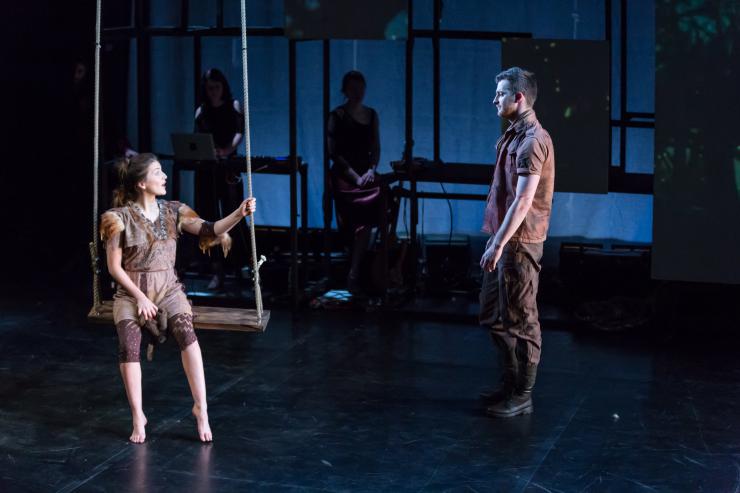
Crawley taps into this sense of fear, jealousy, and lack of trust to create an entirely modern retelling of the myth. The idea of women not being trusted is particularly important. The myth has always been considered a tragedy. A story of young lovers torn apart; at first by fate and then by insecurity, Eurydice has never had a happy ending. A tragedy by its very nature is based on human suffering. In this case, grief and loss run throughout the play. As Crawley demonstrates, much of this suffering is self-inflicted. It does not come from external sources, but from within.
In the play, at first Eurydice is hesitant to embrace her feelings for Orpheus. She meets him as he is returning from war on his way to claim his crown after his father’s death. In time, she falls for him and he for her. Their love is equal and eternal. As his duties compel him to return to the city, she is taken away from her natural habitat and held within a maze of roads, brick buildings, walls. For someone who is used to freedom this is a difficult change to navigate. At night she leaves the city for the woods. There she discovers that the place that has always nurtured her is endangered. Women are being found hanging from branches. Trees are being cut down to make way for urban development. All that Eurydice held dear is being eroded. In town she hears misogynistic comments. Always one to fight back, she challenges these slurs but her husband tells her ignore them, just let them go to preserve harmony.
He had hoped that having a child together would hold her in place next to him.
Into this complex mix walks Hades. Wearing purple and red velvet and snazzy dancing shoes in Crawley’s script, he is a former friend, perhaps a past lover, of Eurydice’s. They share an understanding of where she is from and what she values, which increasingly Orpheus seems to discount. Orpheus has always been jealous of her relationship with Hades. A mischief maker with a sinister smile, his appearance does not bode well for their relationship. His form of mischief is decidedly modern though. An audio visual is played on the back of the stage of Eurydice and Hades sharing confidences of her frustrations with her current relationship and reflecting on the relative freedom she felt in the wild (and by association with Hades). This dramatic moment shatters Orpheus. This allusion to revenge pornography is a clever trick by Crawley. It is at once believable and modern. Here Orpheus is given the unpleasant chance to slip back in time and witness his lover in a previous relationship. The idea that she will never stay with him is shattering. He had hoped that having a child together would hold her in place next to him. But what is there between them now?
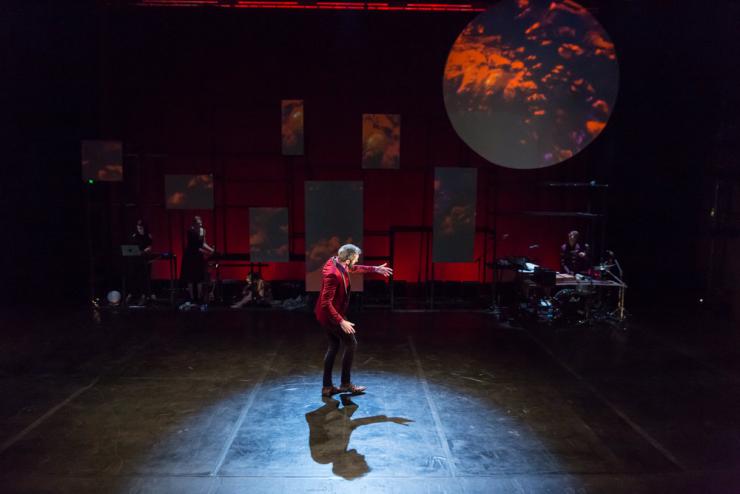
This alludes to two issues that are prevalent in Ireland at the moment. The first as touched upon is revenge pornography, which has become distressingly common with the proliferation of smart phones, social media, and the internet. Alongside this is the idea that through pregnancy and motherhood, Eurydice will be trapped. Encased as a “good wife” and a “good mother” next to him and away from the forest. At present the debate around abortion rights is raging in Ireland as the Repeal the Eighth movement hopes to push for a referendum which will ultimately lead to the removal of the laws currently forbidding Irish women to have abortions. An estimated twelve women a day travel overseas, usually to England, Wales, or Scotland for medical help that they feel should be available at home. The same theatre that produced The Eurydice Project recently hosted A Day of Testimonies. This was a response by artists in support of Repeal the Eighth and included film, live performances, music, installations, and discussions about a woman’s right to choose. The theatre has become a prime battleground for individuals and groups to bring this timely and complex issue into the light.


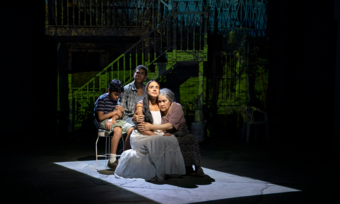

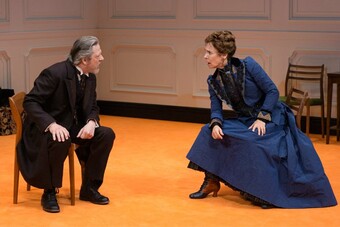

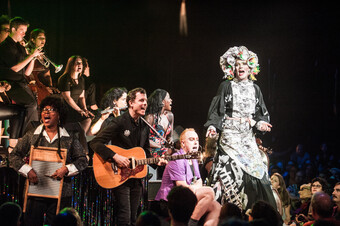

Comments
The article is just the start of the conversation—we want to know what you think about this subject, too! HowlRound is a space for knowledge-sharing, and we welcome spirited, thoughtful, and on-topic dialogue. Find our full comments policy here
No mention of Eurydice by Sarah Ruhl?
"Joanna Crawley’s script flips the original myth on its head by telling the story from Eurydice’s perspective, giving her a voice and agency, perhaps for the first time."
Please don't forget Sarah Ruhl's beautiful play, "Eurydice" which told this story from Eurydice's perspective back in 2003. Also the striking poem "Eurydice" by the poet H.D. written during World War I, I believe. Crawley's play adds another interesting perspective to this larger conversation about the character of Eurydice and a feminist reading of the myth.